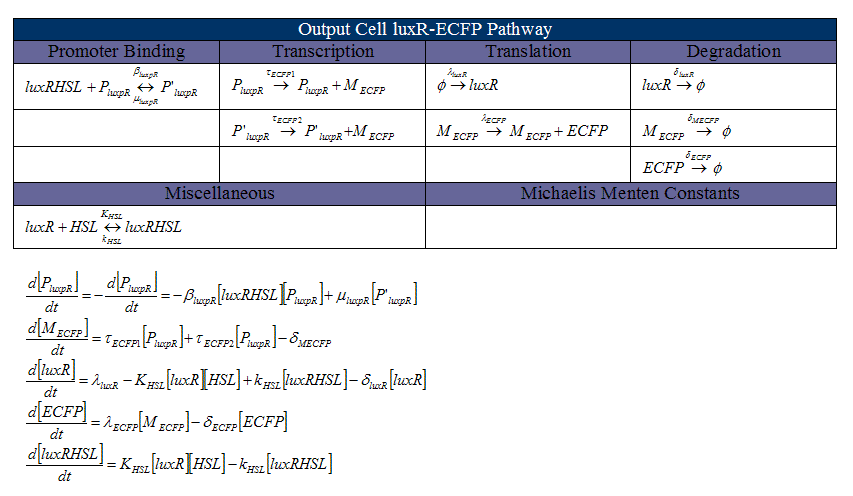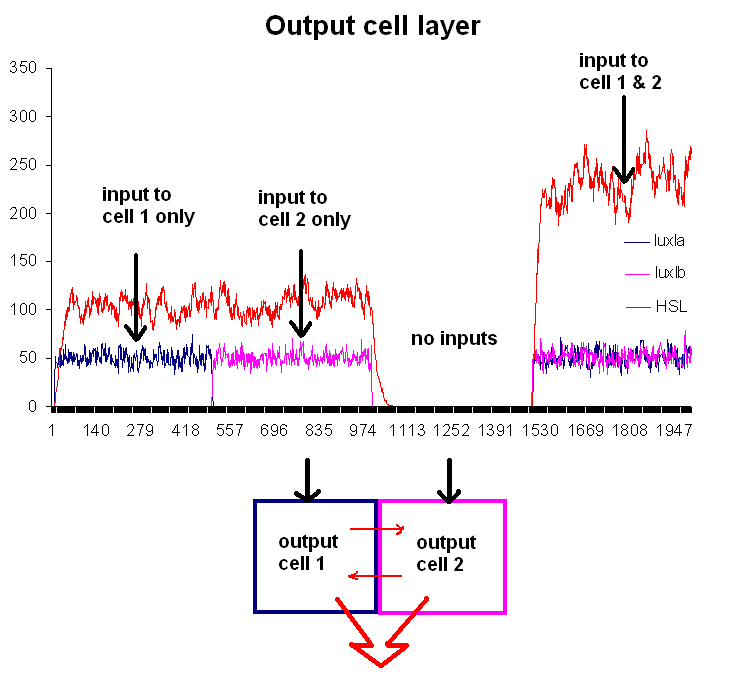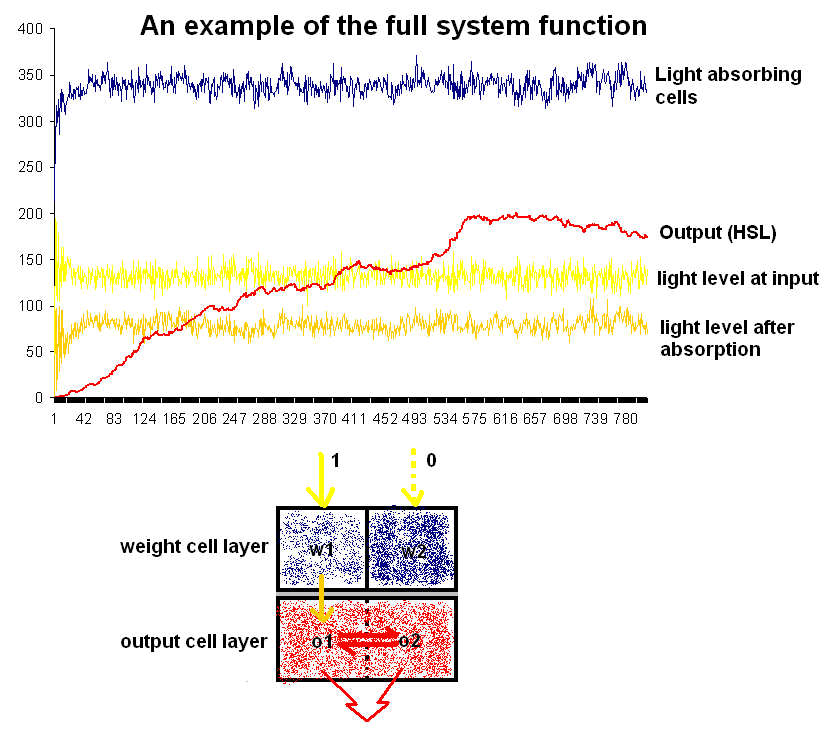Toronto
From 2007.igem.org
Contents |
iGEM Project: Bacterial Neural Network
Please see the Background link below for more on what a neural network is.
Our project aims to build a bacterial (E. coli) neural network composed of two cell types, where filter cells (type A) modulate input to reporter cells (type B). The first cell type is stimulated with red light of a specific intensity and duration, and will turn blue in proportion to that "pulse" of light. Populations of type A will be physically mounted above those of type B, acting as a light filter. Type B cells are receptive to the same wavelength of light, and will fluoresce in proportion to the amount of light they receive.
Neural networks are unique in that their ability to signal both forward (type A influencing type B) and backward (type B influencing type A) results in the ability to learn. Training sessions can be performed with predefined inputs and outputs, and repeated iterations will increase the probability that giving the network an input will produce the desired output. Our neural network training functionality will be implemented through cell-cell signalling from type B cells to type A cells, adjusting the strength of the light filter.
Depending on the training strategy used, our neural network can learn to function as either an AND or an OR gate. Essentially, our neural network will be able to sum a number of inputs and provide a proportionate output. Once training is completed with a few inputs, we should be able to provide novel inputs to the network and produce appropriate responses. This is a step towards demonstrating fuzzy logic (as opposed to traditional digital logic) in genetic circuits.
For a more comprehensive description including genetic circuit diagrams, please see E. Coli Neural Network. (Updated proposal!)
Background: What is a neural network? (coming soon)
Simulated Models
We are currently working on two types of simulations.
Ordinary Differential Equations
The differential equations used to model the luxR-eCFP pathway in the second cell type.
Monte Carlo Stochastic Simulation
Graph showing the second cell type responding to light.
Graph of the
Construction
Construction strategy: Using classical DNA transformation and ligation techniques, we plan to build six testing constructs to provide experimental constants for our simulated models of the neural network. The simulations will then assist us in optimizing our experimental conditions for training the final circuits. Building test constructs also results in reliable intermediate parts that can be used to quickly assemble the complete neural network.
Lab schedule - the lab schedule is now obsolete. The most recent version is available at [http://igem.skule.ca/lab/schedule.htm BlueGenes lab schedules].
Toronto/Lab Protocols/Lab Protocols
The Team
- What is BlueGenes? - a brief overview of who we are, and where the name comes from (not pants!)
BlueGenes is a student group at the University of Toronto with full club status recognized by the University of Toronto Students' Union (UTSU). Made up of students in both undergraduate and graduate programs, we design and construct a genetic circuit for the annual iGEM competition.
- finance, design, lab, presentation
- Meet the team - team roster, photos**, and profiles - A Short History of Progress: BlueGenes 0T7 Timeline - because the lab notebook doesn't tell the whole story - iGEM 2006 Wiki: [http://parts2.mit.edu/wiki/index.php/University_of_Toronto_2006 Blue Water]. Of particular note is the lab notebook (click on Construction under Committees).
Sponsors
(**link to new page for logos)
If you would like to support us, please go to [http://igem.skule.ca/finance/opportunities.htm Sponsorship] for more on becoming a sponsor.
Miscellany
Website: [http://www.igem.skule.ca igem.skule.ca] - other information about BlueGenes can be found here.
Contact Us: igem[at]skule[dot]ca



